The pandemic couldn’t stop the steady march of development in San Jose in 2021. Tech campuses, high-rise towers and affordable housing are all in the works for next year and beyond.
Here are a few of the biggest projects to watch in 2022:
Google’s downtown dream

Earlier this year, San Jose lawmakers approved Google’s plan to build the largest development in San Jose history. Google’s Downtown West project, first proposed in 2019, spans 80 acres near Diridon Station in the downtown area. The campus will feature 4,000 housing units—approximately 1,000 affordable—a 30,000-50,000-square-foot community center, 15 acres of parks and 500,000 square feet for retail, cultural, education and arts uses. The tech giant estimates up to 25,000 employees will work in its downtown offices.
Google is anticipated to start construction in late 2022 or early 2023, beginning on Santa Clara Street. The project is expected to take at least a decade to complete.
Community members have protested the project since 2018, saying it will gentrify the area, displace businesses and cause rents to skyrocket. Google tried to soothe these concerns by launching a $200 million community benefits fund. The San Jose Sharks also opposed the project, saying it could force them out of San Jose because of the impact it would have on their home arena at SAP Center, located just a few hundred feet from the planned campus. In exchange for not raising legal challenges, San Jose officials guaranteed at least 2,850 parking spaces to the Sharks organization during construction.
Cambrian Park Plaza makeover
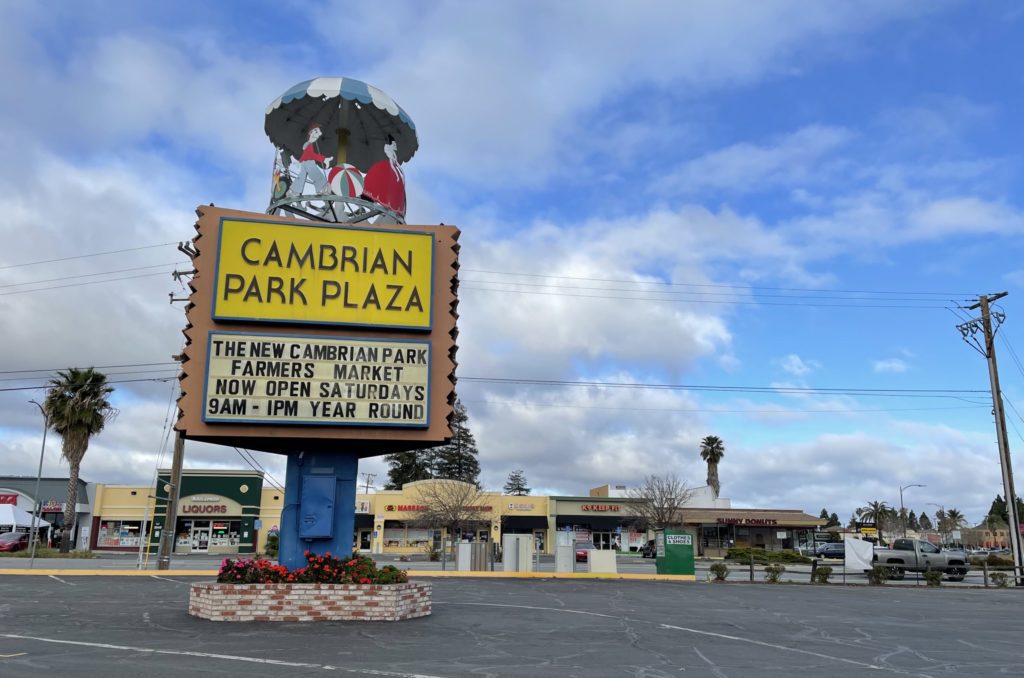
The 1950s-era Cambrian Park Plaza is going to be transformed into Cambrian Village—an 18-acre urban village with restaurants, retail and a hotel. It will also contain 305 apartments, 48 single-family homes with 27 granny flats, 25 townhomes and a senior living center.
The planned redevelopment has been in the works since 2017 and subject to tweaks as residents raised concerns about preserving the nostalgic feel of the plaza. Residents have until Jan. 3 to participate in a public comment period on the draft environmental impact report, which asks for community input to guide the city and developer Weingarten Realty.
The timeline for this project is lengthy because San Jose needs to annex the plaza, which sits in Santa Clara County. Annexation hearings will take place in the spring or summer of 2022, and construction isn’t expected to be completed until 2026.
Mixing housing and farming
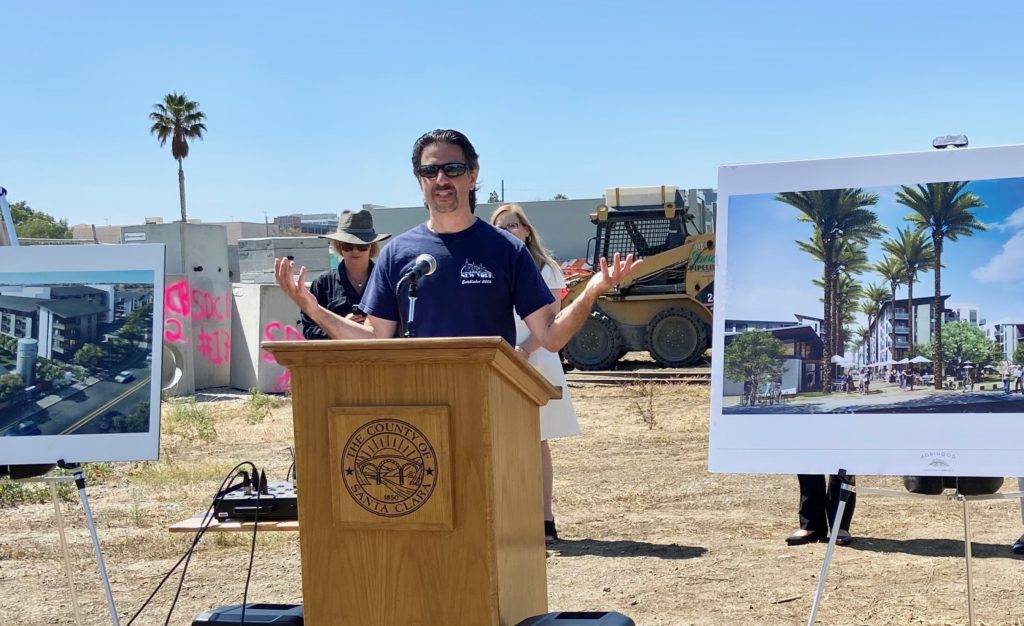
Agrihood, a first-of-its-kind project combining housing with a large urban farm, broke ground this summer in Santa Clara. The development sits on 5.8 acres at North Winchester Boulevard across from Westfield Valley Fair. It will feature 160 mixed-income apartments, 165 low-income homes for seniors and veterans and 36 townhomes.
Agrihood has the capacity to meet 10% of Santa Clara’s target for low-income housing. Construction is funded by a mix of county Measure A funds, city dollars and a grant of tax-exempt bonds from the California Debt Limit Allocation Committee. It’s expected to be completed in 2023.
Silver screen to retail

The shuttered Camera 12 movie theater in downtown San Jose is being rebuilt as a mixed-use office and retail space with bars and restaurants. Developer Urban Catalyst, which purchased the theater in 2019, received a building permit for the 100,000-square-foot project earlier this year. The developer closed its first round of funding last December after raising $131 million in investments.
The Paseo project is the first of six developments Urban Catalyst started in 2021 as part of a drive to revitalize the struggling downtown core, and the developer is taking advantage of federal tax breaks available to those who build in San Jose’s opportunity zones. Construction is expected to finish in July.
High-rise towers
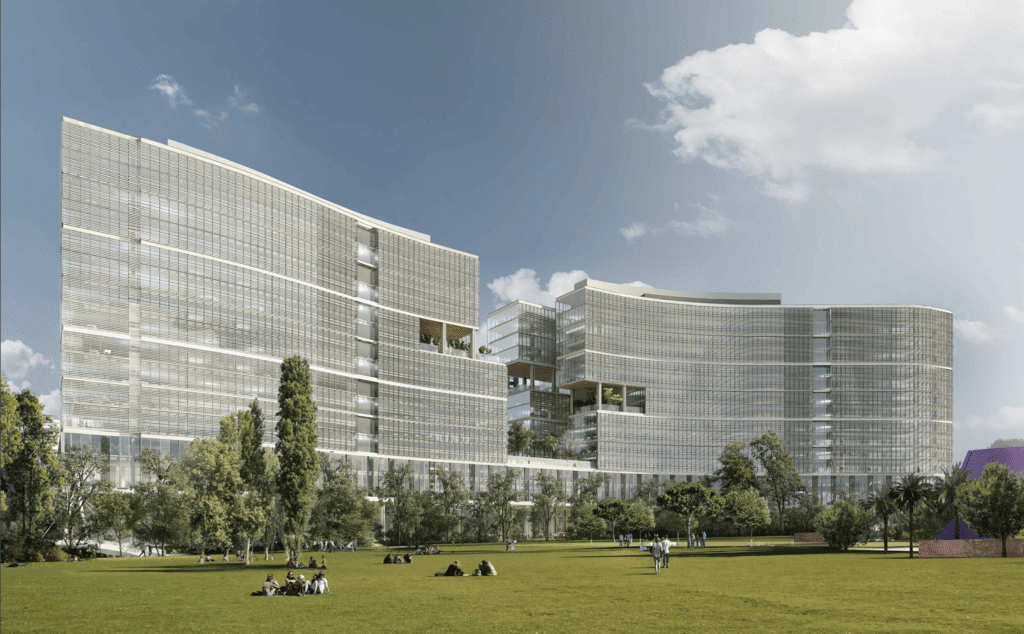
Boston Properties got the green light in September to build a pair of high-rise office towers on South Almaden Boulevard and Woz Way in San Jose.
The Almaden Office Project, first proposed in 2018, will feature two connected, 16-story office towers at the city’s height limit of 283 feet. Once built, the towers will boast more than 2 million square feet of space for office, retail and amenity purposes. Construction is expected to bring 1,919 full-time jobs and generate $4.3 million annually for the city.
The towers are part of a broader push to revitalize downtown San Jose, which has struggled to recover from the pandemic. Environmental groups, including the Santa Clara Valley chapter of the California Native Plant Society, oppose the project because of its proximity to the Guadalupe River and the potential impact on birds.
Emergency housing surge
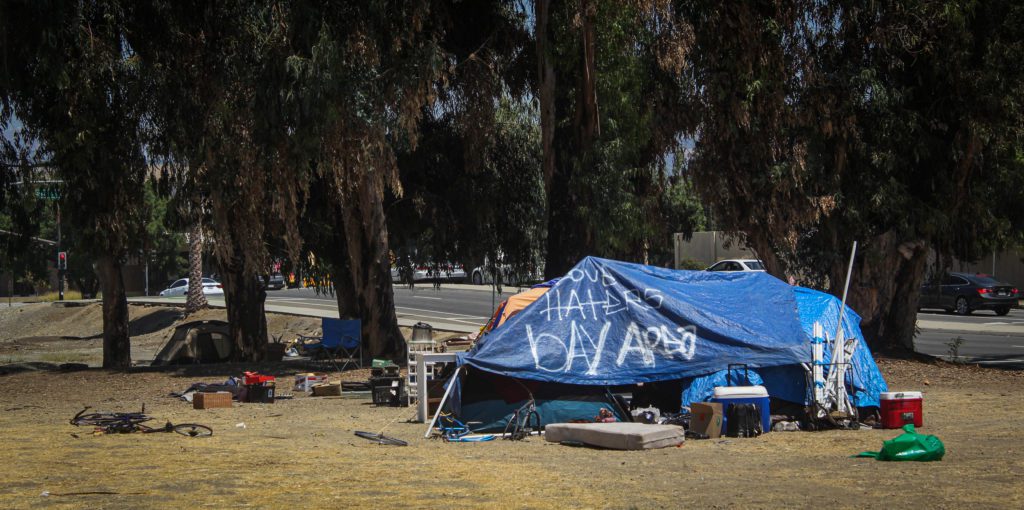
San Jose wants to build approximately 550 permanent and interim homes next year using funds from Project Homekey, a $2.75 billion grant program designed to create rapid housing for people experiencing homelessness during the pandemic.
The city plans to convert four hotels—the Pavilion Inn, Arena Hotel, Pacific Motor Inn and Residence Inn—into permanent or interim housing. A fifth site located in District 10 is slated for development, but remains controversial.
Project Homekey funds are a critical part of Mayor Sam Liccardo’s plan to provide 2,300 new permanent and transitional homes by the end of 2022 to address the crisis of unhoused people in the city. Some communities in the region have rallied to stop Homekey sites, including one planned in Santa Clara.
Mystery auction
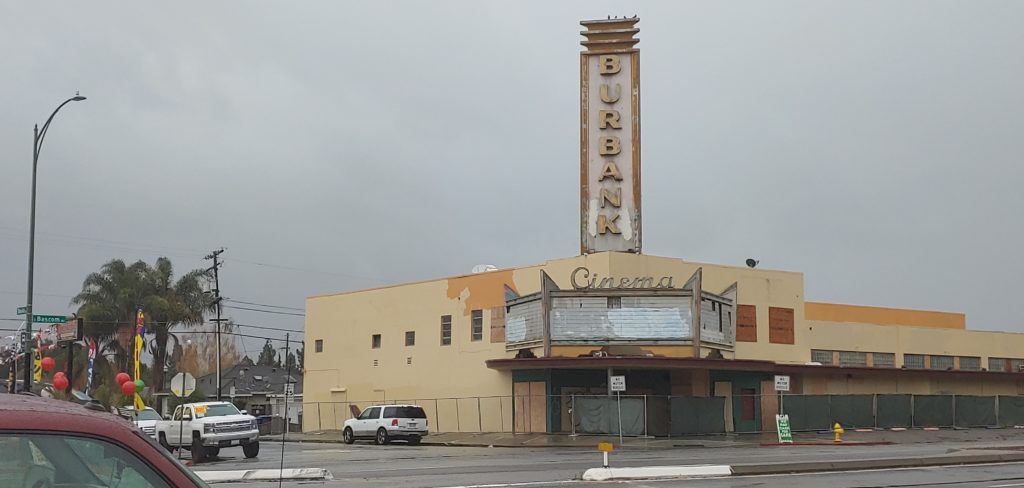
San Jose preservationists are anxious to see what will be done with the historic Burbank Theater, which sold for $1.6 million after standing vacant for two decades.
Built in 1949, the Art Deco building on Bascom Avenue went from a neighborhood staple to an eyesore over the years. It was vandalized and covered in graffiti—a trend shared by other buildings along South Bascom Avenue between Parkmoor Avenue and San Carlos Street. The building went into foreclosure in 2019 and was owned by the U.S. Bank National Association.
San Jose has lost several historic theaters and other buildings in recent years, and preservationists are keen to see the Burbank Theater kept intact—arguing it could be used to invigorate Bascom’s sluggish commercial corridor. Preservation Action Council of San Jose recently added it to the “Endangered 8” list of endangered historic structures. It’s unclear who purchased the building or what they intend to do with it.
New student housing

The San Jose Planning Commission approved a 23-story apartment building just a block away from San Jose State University. The project will provide a much-needed boost to the supply of student housing. A downtown resident and property manager, Steve Cohen, appealed the project because it requires the demolition of several residential buildings.
Developer Urban Catalyst purchased the land in 2020 for $6.25 million and plans to house more than 850 students in the 240-unit tower. It’s one of several projects Urban Catalyst is building in downtown San Jose.
Homes for seniors
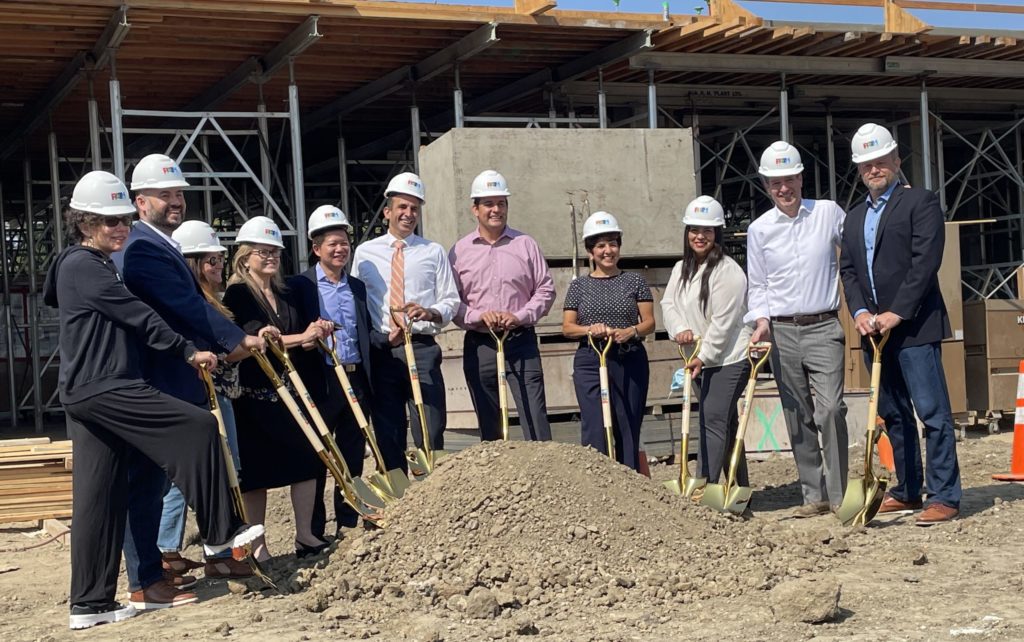
San Jose broke ground on an affordable housing project for homeless seniors at the site of the former Dick’s Supermarket north of Japantown.
Villas at Fourth Street is expected to open next year and will house chronically homeless seniors aged 55 and above. Residents referred to the site by Santa Clara County and PATH (People Assisting The Homeless) will have access to case management services, mental health care and substance use treatment. The complex will feature a community garden, teaching kitchen, tech lab and bikeshare program, among other amenities.
The housing will be built by PATH Ventures, the real estate arm of the nonprofit. The 93-unit site is partly funded by Measure A, which provides $950 million for affordable housing projects. Nearby residents objected to the project when it was first proposed in 2019, citing concerns about crime and drug use.
Bo Town 2.0
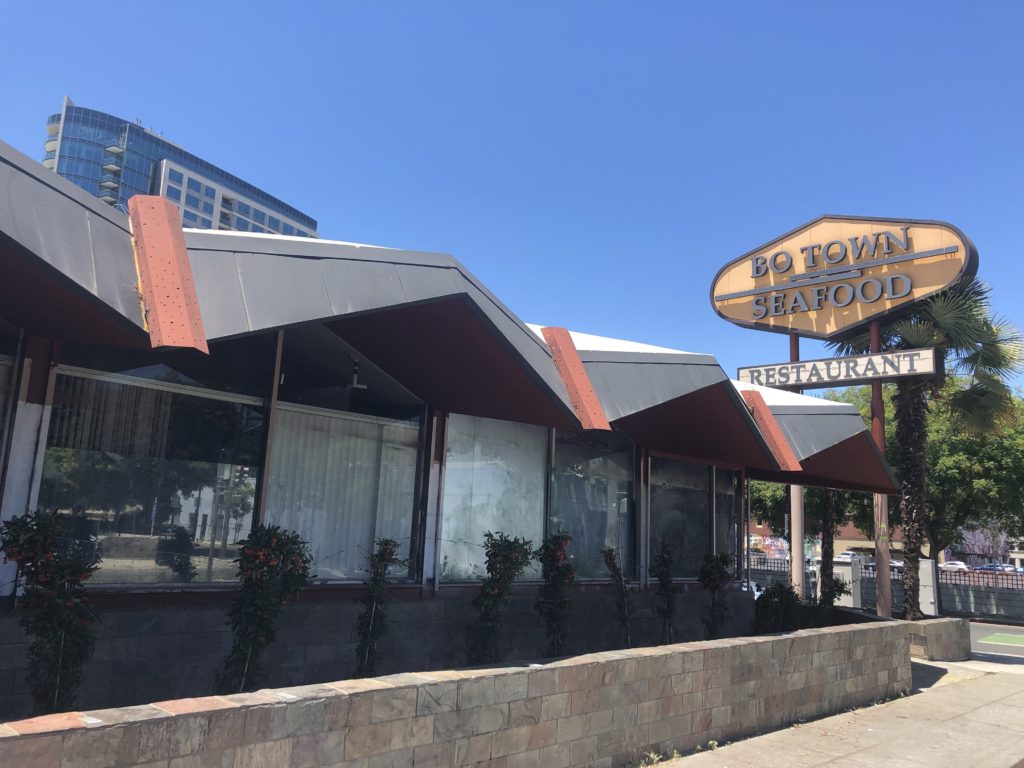
A developer plans to demolish the shuttered Bo Town diner and turn it into a 29-story residential tower.
Canadian firm Westbank wants to replace the restaurant, which closed in 2019, with an apartment complex containing 520 residential units, retail space and almost 200 parking spaces. The developer has promised to rebuild the restaurant on the first floor of the tower using the same 1950s “Googie” architectural flourishes that distinguished Bo Town.
The restaurant, first built in 1967, isn’t an official historical landmark, but is listed in San Jose’s Historic Resources Inventory.
A new life for CityView
A developer tore down the former Bank of California in downtown San Jose to make way for a three-tower, 3.64 million-square-foot office park in CityView Plaza. Lawmakers unanimously approved the project by developer Jay Paul Co. in 2020, which when complete could potentially hold 14,000 workers.
Local preservationists petitioned to stop the project, which required the demolition of the brutalist-style old bank building. A judge refused to block the demolition, noting that saving the bank would have forced the developer to reduce the project size by 38%.
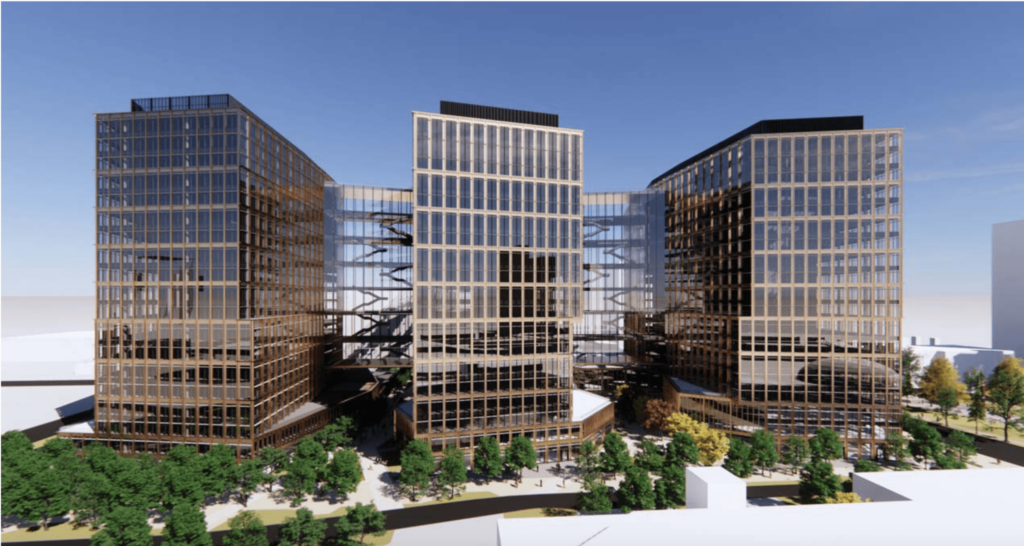
A neighbor for Levi’s Stadium
A developer expects to break ground next year on the first phase of a 240-acre commercial and residential complex in Santa Clara.
Related Santa Clara is a planned mixed-use site near Levi’s Stadium that will eventually include 5.7 million square feet of office space, 500,000 square feet of retail and 200,000 square feet of restaurants. There will also be 60 acres of open space and public parks.
Santa Clara and San Jose have been in a 15-year legal fight over traffic issues related to development that has stalled the production of housing in North San Jose. The project could potentially be delayed if the cities don’t find a permanent solution.
Contact Eli Wolfe at [email protected] or @EliWolfe4 on Twitter.



Leave a Reply
You must be logged in to post a comment.